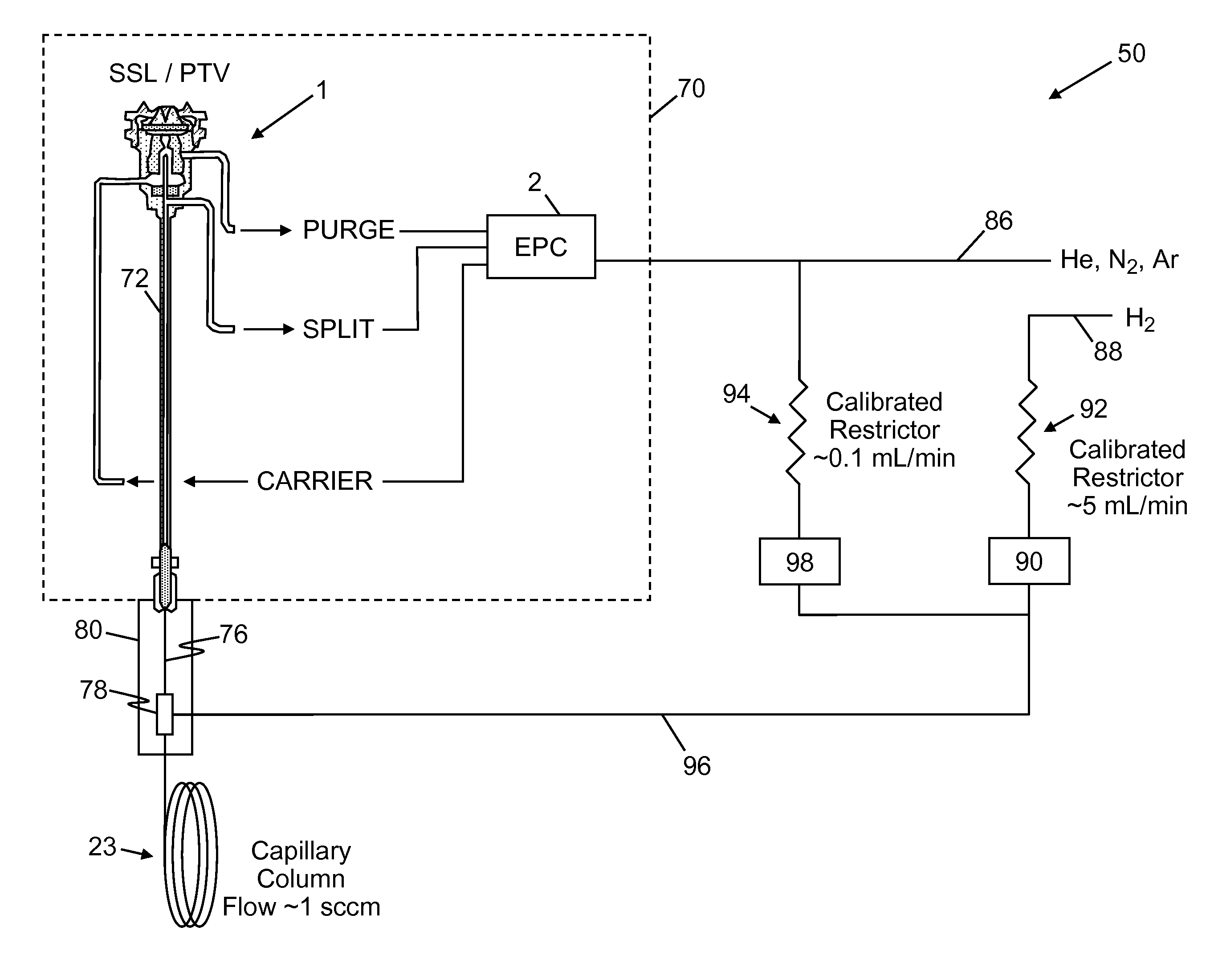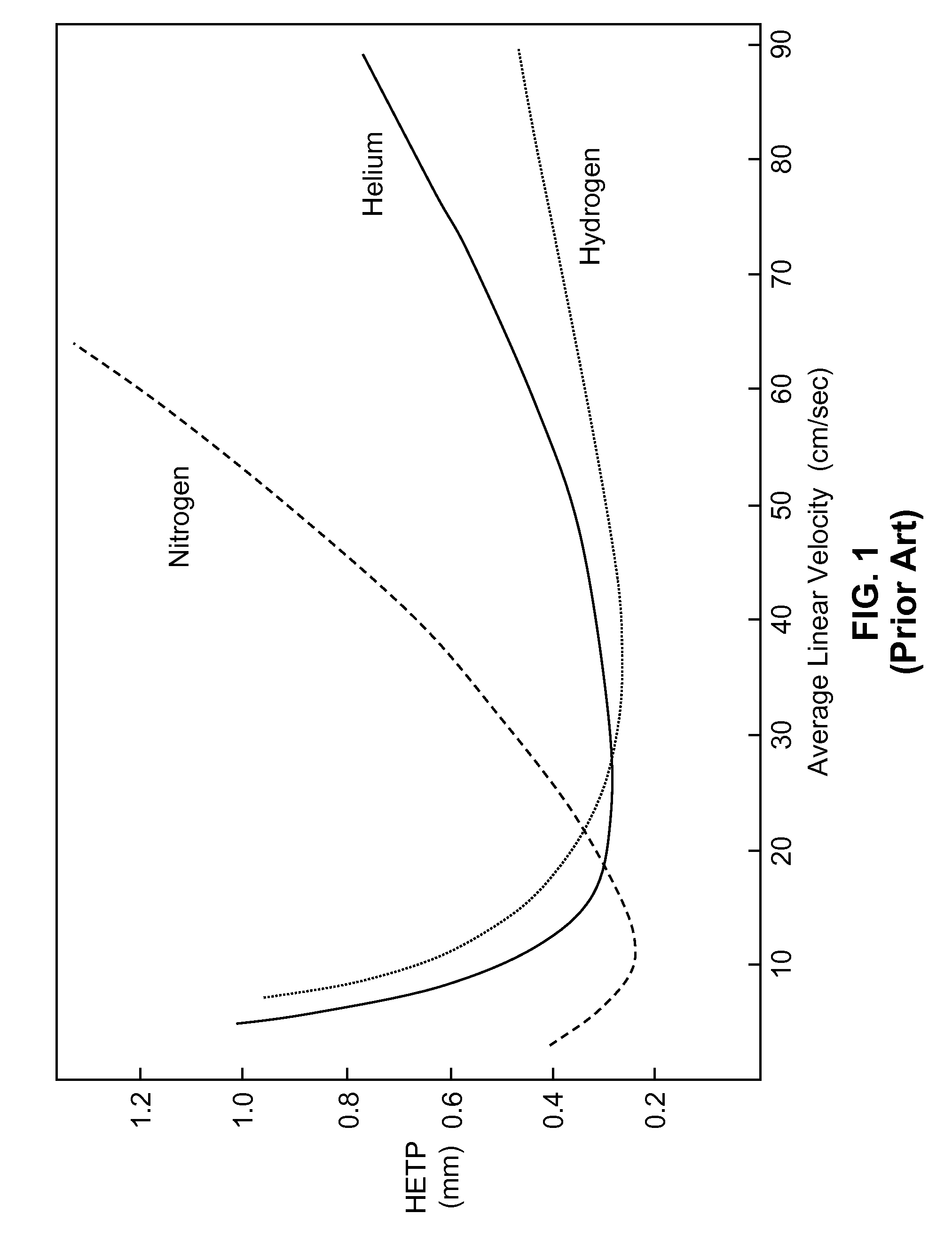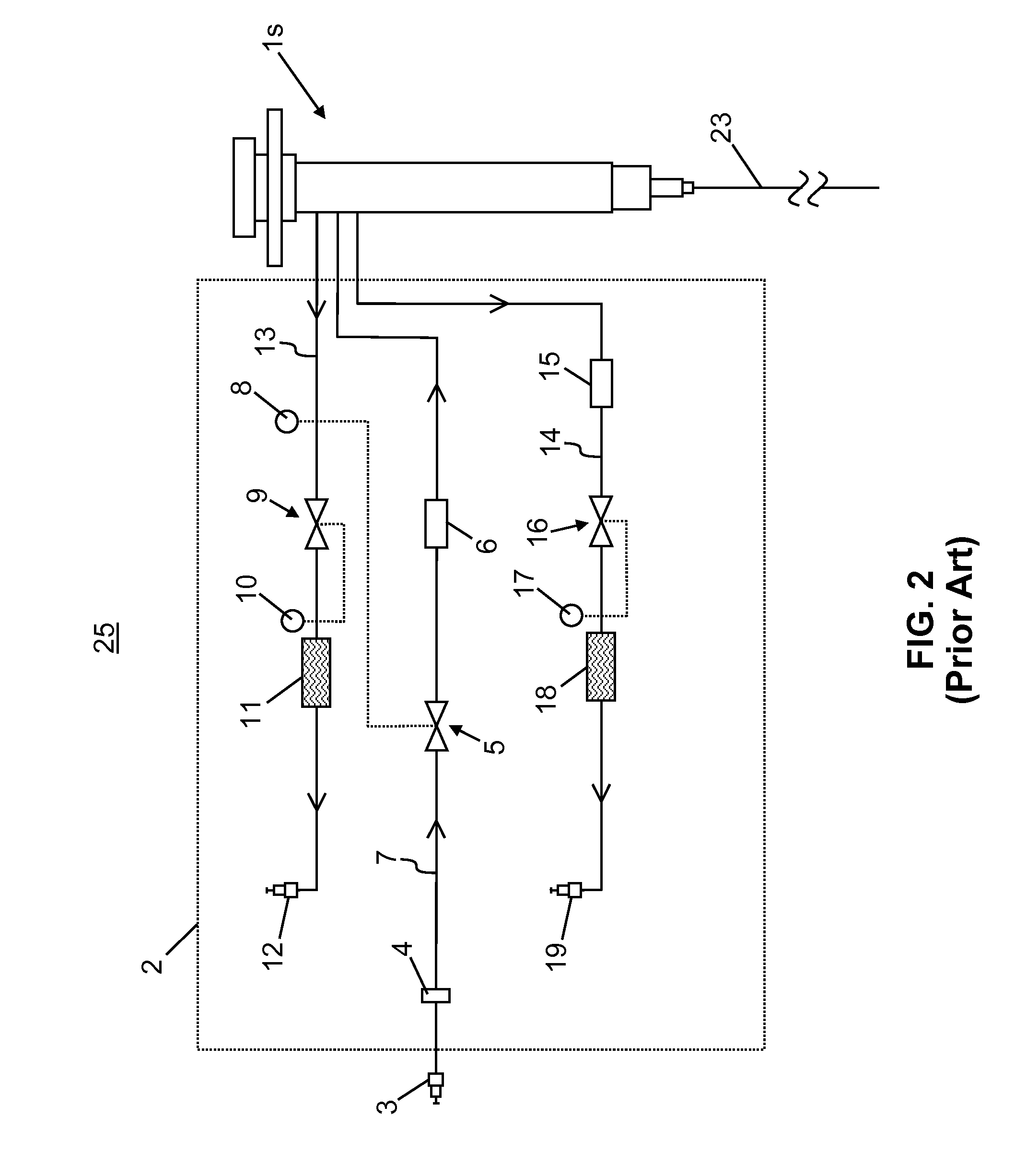Gas Chromatograph System Employing Hydrogen Carrier Gas
a hydrogen carrier gas and gas chromatograph technology, applied in the field of gas chromatography, can solve the problems of non-reproducible quantitation, less chemically reactive than nitrogen, helium or argon, and detrimental to the stationary phase chemistry of the column, and achieve the effect of facilitating the separation of the transferred sample components
- Summary
- Abstract
- Description
- Claims
- Application Information
AI Technical Summary
Benefits of technology
Problems solved by technology
Method used
Image
Examples
Embodiment Construction
[0025]This disclosure describes improved gas chromatograph systems and methods for operating gas chromatograph systems. The following description is presented to enable any person skilled in the art to make and use the invention, and is provided in the context of a particular application and its requirements. Various modifications to the described embodiments will be readily apparent to those skilled in the art and the generic principles herein may be applied to other embodiments. Thus, the present invention is not intended to be limited to the embodiments and examples shown but is to be accorded the widest possible scope in accordance with the features and principles shown and described. To more particularly appreciate the features of the present invention, the reader is referred to FIGS. 1 through 5 in conjunction with the following description.
[0026]FIG. 3 illustrates a first gas supply and exhaust system 30 for a gas chromatograph in accordance the present teachings. The injecto...
PUM
| Property | Measurement | Unit |
|---|---|---|
| length | aaaaa | aaaaa |
| temperature | aaaaa | aaaaa |
| temperature | aaaaa | aaaaa |
Abstract
Description
Claims
Application Information
 Login to View More
Login to View More - R&D
- Intellectual Property
- Life Sciences
- Materials
- Tech Scout
- Unparalleled Data Quality
- Higher Quality Content
- 60% Fewer Hallucinations
Browse by: Latest US Patents, China's latest patents, Technical Efficacy Thesaurus, Application Domain, Technology Topic, Popular Technical Reports.
© 2025 PatSnap. All rights reserved.Legal|Privacy policy|Modern Slavery Act Transparency Statement|Sitemap|About US| Contact US: help@patsnap.com



